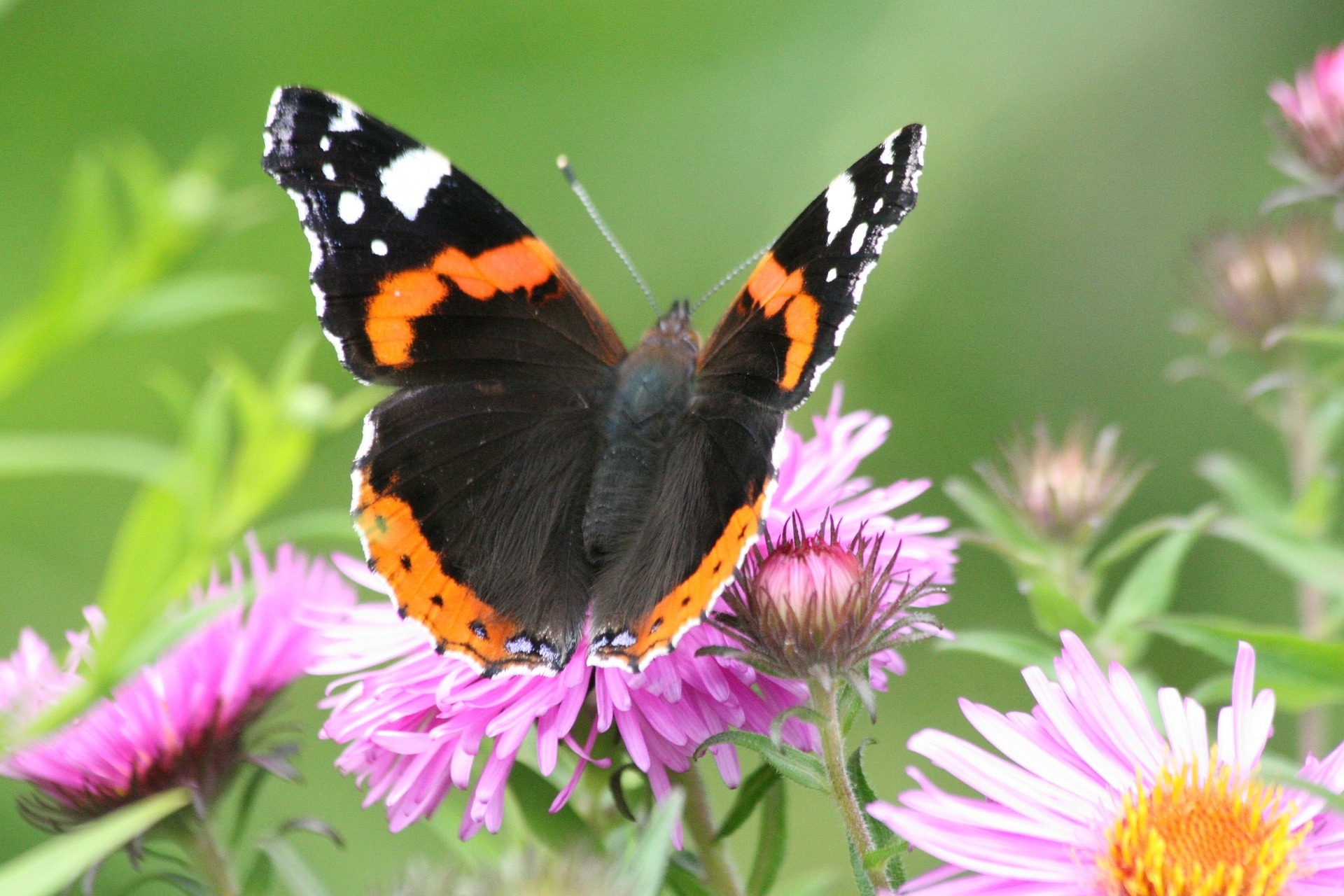The Red Admiral is mostly black with striking orange strips intersecting its wings and white spots adding extra colour to the wingtips. Their undersides are excellent for camouflage as they look like dried up old leaves. Females are hard to distinguish from males except by behaviour when they can be seen slowly making their way through patches of nettles to lay their eggs, one on each leaf.
Larvae: The larvae can appear in a range of different colours, from black to a lighter brown colour, right through to an almost yellowish-green type colour.
Latin name: Vanessa atalanta
Size: 64-78mm

Overview
Only a small number of these butterflies make their home in Britain and most of the ones we see in our gardens are travellers from warmer parts of Europe. Most of them find our winters far too cold and harsh to stick around, but migrants make them a common species throughout the warmer months with two peaks, one in May and June and the second between August and October. Like many other butterfly species, they can often be seen on Buddleia but also on rotting fruit enjoying the mushy meals that we find disgusting (YUCK!). Their larvae are also similar to other species as they are usually seen on nettle plants. They use the leaves to build a tent which they hide in until they want to eat.
In the garden
The Red Admiral has become more numerous in the UK in recent years, possibly due to warmer weather. It can be attracted with plants like Buddleia and Ivy while nettle patches will give the adults somewhere to lay their eggs and provide food for their larvae. Throwing over ripe fruit onto compost heaps can also be a sweet and enticing treat.